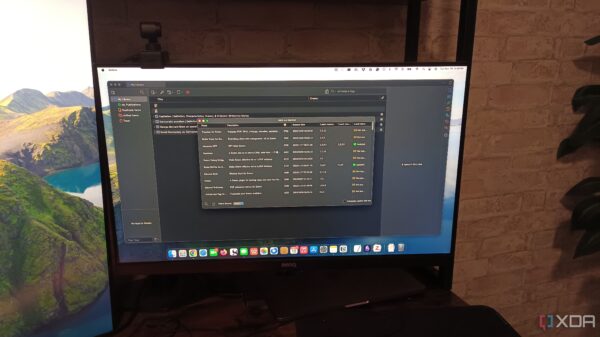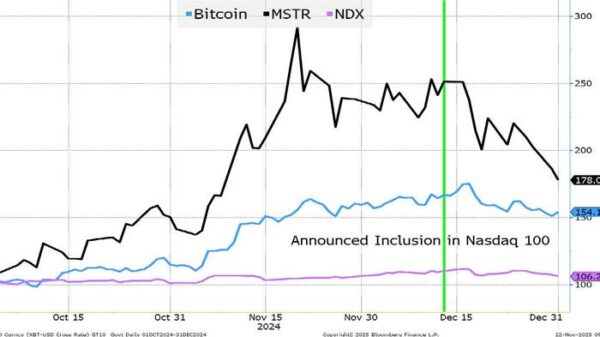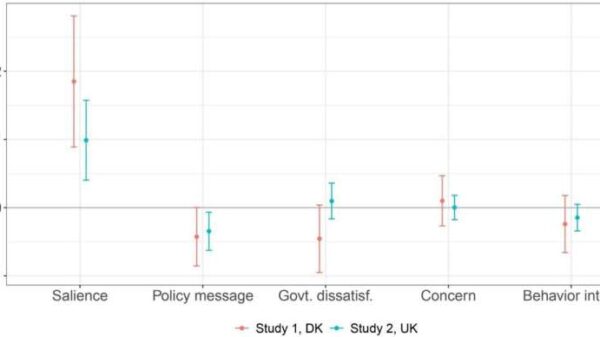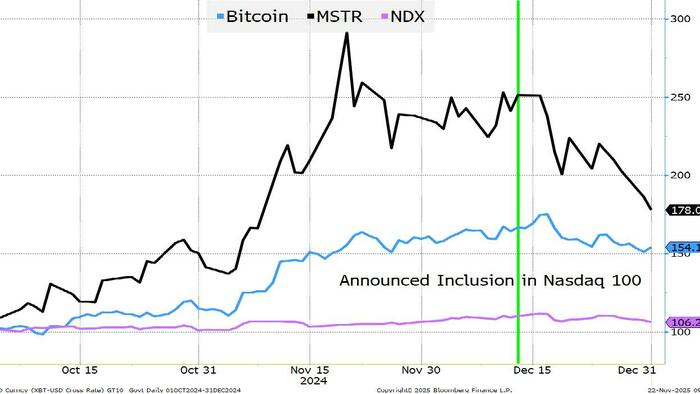The financial landscape experienced notable turbulence last weekend, as the Nasdaq 100 index fell by over 3%. This decline is part of a broader market trend that saw the S&P 500 decreasing by 2%, while the S&P 500 Equal Weight index dipped by 0.9%. Peter Tchir from Academy Securities highlighted these developments in a report titled “Rotation, pAIn, or Smooth Sailing?” released over the weekend, emphasizing the ongoing “pAIn” in financial markets.
During a recent segment on Bloomberg Surveillance, Tchir explored various topics including Bitcoin, retail investment strategies, and the implications of fluctuating inflation and job markets. A key theme emerging from these discussions is the concept of “Free” money, which has significant implications for both corporate spending and stock valuations.
Understanding “Free” Money in Today’s Market
The term “Free” money refers to the phenomenon where a corporation announces a certain level of spending, and in response, its stock price increases by a greater amount. For instance, if a company declares a $10 billion investment and its market value rises by $15 billion, it effectively generates shareholder wealth. This dynamic has been prevalent in sectors such as artificial intelligence and data centers, where companies have previously benefitted from aggressive spending announcements.
However, Tchir noted a shift in this trend; merely announcing spending increases is no longer leading to significant stock price appreciation. Companies might face pressure to reduce spending, a move that could influence their stock performance as investor expectations shift.
The cryptocurrency market, particularly digital asset treasury companies like MSTR (MicroStrategy), also reflects this “Free” money concept. These firms, which have traded at high premiums compared to their crypto holdings, are finding it increasingly challenging to maintain such valuations. As their stocks align more closely with their net asset values, the appeal of creating “free” money through spending is waning.
The Impact of Passive Investing and Market Correlations
The discussion of “passive” investing has gained traction as this approach now dominates much of the market. Tchir criticized the notion of passive investing, particularly when it leads to large inflows into a concentrated group of companies. For example, the Nasdaq 100’s structure means that a significant portion of investments are funneled into just a handful of firms, distorting valuations and creating potential risks for investors.
This raises questions about the future of digital asset treasury companies, which have attracted investors by providing unique access and returns that are not readily available elsewhere. The recent growth of crypto-focused exchange-traded funds (ETFs) has made access easier domestically, but internationally, the allure of DATs remains strong.
On October 10, 2024, Bitcoin’s market cap suffered a significant drop, falling from $122,000 to $105,000. This decline coincided with concerns that MSCI might exclude digital asset treasury companies from its equity indices, a decision expected by January 15, 2025. The potential exclusion could lead to forced selling of these stocks, further impacting the broader crypto market.
As Tchir pointed out, the correlation between crypto and traditional equities has become increasingly pronounced. The market capitalization of Bitcoin, once nearly $2.5 trillion, now stands at approximately $1.85 trillion, reflecting a substantial loss of value that could have ripple effects throughout the global economy.
The interconnectedness of these markets complicates investment strategies. For many, the distinction between crypto and traditional assets is blurring, making it more challenging to hold onto investments during downturns.
As volatility persists, the Federal Reserve faces pressure regarding its monetary policy. Predictions surrounding potential interest rate cuts have fluctuated dramatically, with a recent estimate indicating a 63% chance of a cut at the upcoming December meeting. The Fed’s decision will have wide-reaching implications, especially if the end of the “free” money era begins to dampen spending in critical sectors such as AI and data centers.
In conclusion, the current market dynamics signal a significant shift, with the potential end of “free” money influencing investor behavior and corporate strategies. The implications extend beyond immediate stock valuations, as the broader economy could feel the effects of reduced spending and a reevaluation of asset values. As Tchir aptly noted, the intersection of crypto and equities, alongside evolving monetary policies, will be crucial to monitor in the coming months.




































































